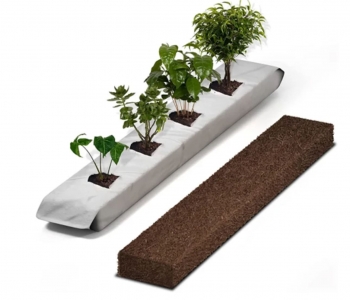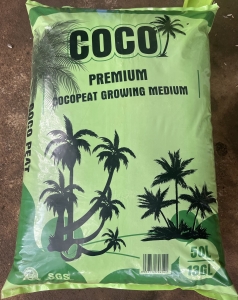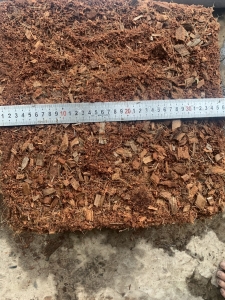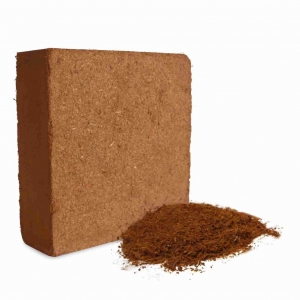Introduction to Buffering and Processing Coconut Fiber and Coco Peat
Buffering and processing coconut fiber and coco peat is a meticulous but essential process that greatly enhances their suitability as growing substrates. By following the outlined steps and recommendations, growers can ensure that their coco peat is ready to provide optimal conditions for plant growth. This careful preparation not only improves nutrient availability but also enhances the overall health of the plants, making it a worthwhile investment in hydroponic agriculture.
Introduction to Buffering and Processing Coconut Fiber and Coco Peat
Buffering and processing coconut fiber and coco peat is essential for creating an optimal growing substrate for hydroponic agriculture. Many raw materials, including peat moss and coco peat, require careful preparation before they can be used effectively. This article will guide you through the steps to buffer and process coconut fiber and coco peat meticulously, ensuring the best substrate for your plants.
Understanding the Need for Buffering
Coco peat, often considered a superior growing medium, can contain high levels of salt and varying electrical conductivity (EC) due to its production methods. For instance, many coconuts from India and Sri Lanka are soaked in seawater and lake water to soften the fibers, leading to elevated salt content. Before use, the pH of peat moss must be adjusted, and coco peat should be checked by a herbalist. For certain crops, like roses, buffering is crucial to ensure optimal growth.
What is Coir Buffering?
Coir buffering is a chemical process that replaces sodium and potassium ions with calcium, effectively washing away excess waste. This process helps create a suitable environment for plant growth by improving nutrient availability and reducing salinity.
**Recommended Buffer Ratios:**
- To buffer 5 cubic meters of coco peat, mix 1,000 liters of water with 7 kg of Calcium Nitrate.
How to Buffer Coconut Fiber and Coco Peat
1. **Hydration of Coco Peat:**
- Start by fully hydrating or expanding the coco peat. Allow it to sit until no more water flows out.
2. **Mixing Calcium Nitrate:**
- Prepare a solution of Calcium Nitrate at a ratio of 7 kg per 1,000 liters of water. The recommended application is 200 liters of this treated water for every cubic meter of coco peat.
3. **Application of Treated Water:**
- Ideally, apply the treated water over a 24-hour period using a slow sprinkler or irrigation system.
4. **Incubation Period:**
- After applying the Calcium Nitrate solution, leave the coco peat hydrated for two days to allow the buffering agent to take effect.
5. **Rinsing:**
- Once the incubation period is over, rinse the coco peat again. Fill the washing chamber with water and allow it to drain. This step ensures that any remaining salts are washed away.
6. **Final Product:**
- After these steps, you will have properly buffered coco peat, ready for use.
**Note:** Always use completely soluble Calcium Nitrate. Field-grade Calcium Nitrate is acceptable if stirred adequately to dissolve any particles.
Importance of Coconut Fiber and Coco Peat
Coconut fiber and coco peat offer several advantages as growing mediums:
- **Ideal pH Levels:** They maintain an optimal pH for plant growth.
- **Air Retention:** Coir and coco peat retain 22% air even when fully saturated, promoting healthy root development.
- **Excellent Drainage:** They provide excellent drainage properties, preventing waterlogging.
- **Anti-Fungal Properties:** Their natural properties help protect plants from soil-borne diseases.
- **Renewable Resource:** Both materials are 100% renewable and environmentally friendly.
- **Cation Exchange Capacity (CEC):** Coir and coco peat possess a natural negative charge, allowing them to attract and retain essential nutrients.
Cation Exchange Capacity (CEC)
The CEC of coconut fiber is between 40-100 meq/100g, meaning it can effectively hold nutrients. However, high sodium and potassium levels may lead to nutrient lockout, causing deficiencies in plants. It is crucial to wash coir thoroughly to reduce conductivity levels below 1 mS/cm before use.
Conclusion
Buffering and processing coconut fiber and coco peat is a meticulous but essential process that greatly enhances their suitability as growing substrates. By following the outlined steps and recommendations, growers can ensure that their coco peat is ready to provide optimal conditions for plant growth. This careful preparation not only improves nutrient availability but also enhances the overall health of the plants, making it a worthwhile investment in hydroponic agriculture.
Keywords:
Buffering coconut fiber, coco peat processing, hydroponic agriculture, calcium nitrate, cation exchange capacity, coir buffering, nutrient availability, pH adjustment, salt content, eco-friendly growing medium, coconut fiber mattress.
















 Online: 11
Online: 11
 Total access: 4445731
Total access: 4445731